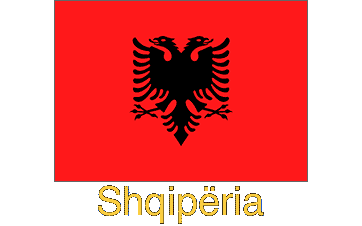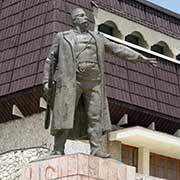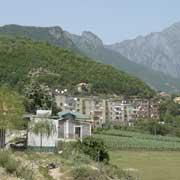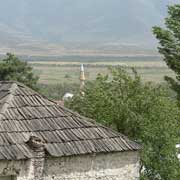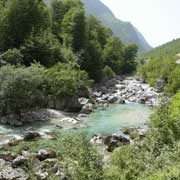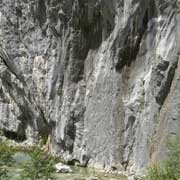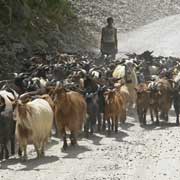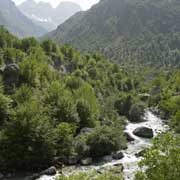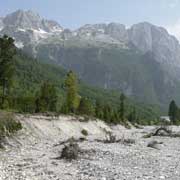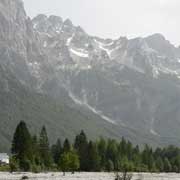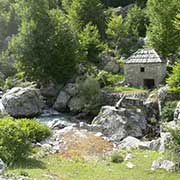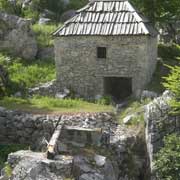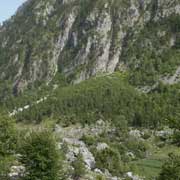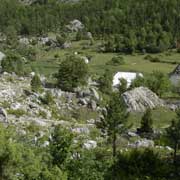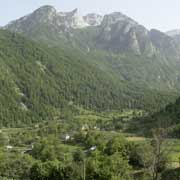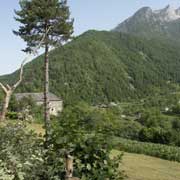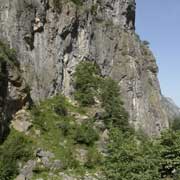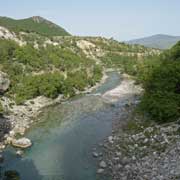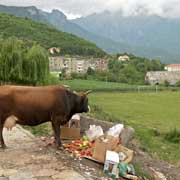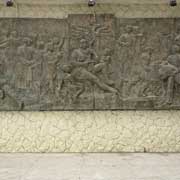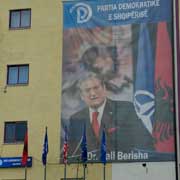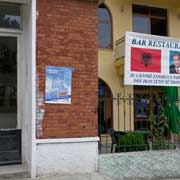Photos from Albania
In the Alpet Shqiptare, the Albanian Alps
Bajram Curri, in Albania’s northeast, close to the border with Kosovo, is a small town of about 5,300 people near Fierzë and 15 kilometres from the Drin or Lake Koman ferry terminal of Bregluma. It is the centre of the Tropojë District and used to be called Kolgecaj; this region has always resisted all central government, including the communist dictatorship of Enver Hoxha in the early fifties.
you may then send it as a postcard if you wish.
People of Tropoja, 13 kilometres further northeast and 7 kilometres from the border, were displaced and settled here in 1952. Kolgecaj was then renamed Bajram Curri, after the great Albanian nationalist, born in Gjakova (now in Kosovo) who lived from 1862 to 1925. He played a leading role, from the League of Peja (now in Kosovo) in 1898 onwards, fought against the Greeks when they tried to take over the country in 1917 and 1920 against insurgents during an attempted pro-Serbian coup. He was an opponent of fellow tribal leader Ahmed Zogu, later King Zog I, and led many bloody encounters against him. Sentenced to death by King Zog in 1922, he was pinned down in Dragobi Cave, 15 kilometres from the present town, by Zog’s police. He was gunned down, fighting to the end, pistol in hand, surrounded by his loyal followers. A large bronze statue of Bajram Curri now stands in the town that bears his name.
A gravel road follows the narrow Valbona river to the village of Valbona, 22 kilometres to the northwest in the Alpet Shqiptare, the Albanian Alps, the wild mountains along the Kosovo and Montenegrin borders. There are views of the river, the Lumi i Valbonës, with its rapids, snowcapped mountains, small farms, herds of goats led along the road. The road leads through the small mountain villages Margegaji, Shoshani, and Dragobi: the cave site where Bajram Curri was gunned down.


